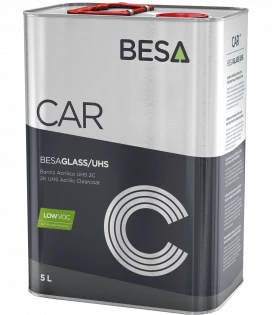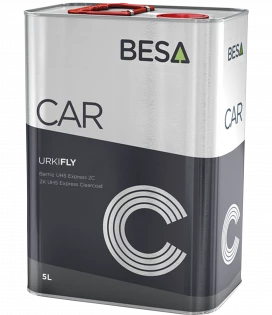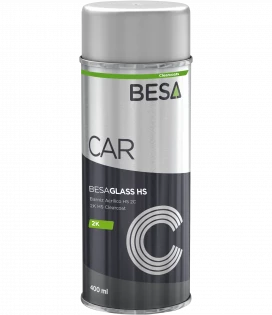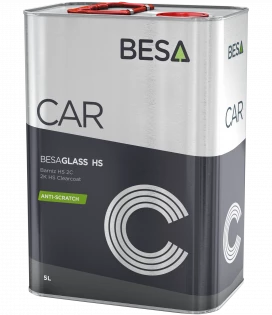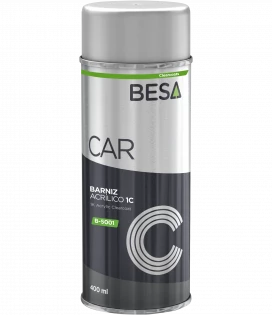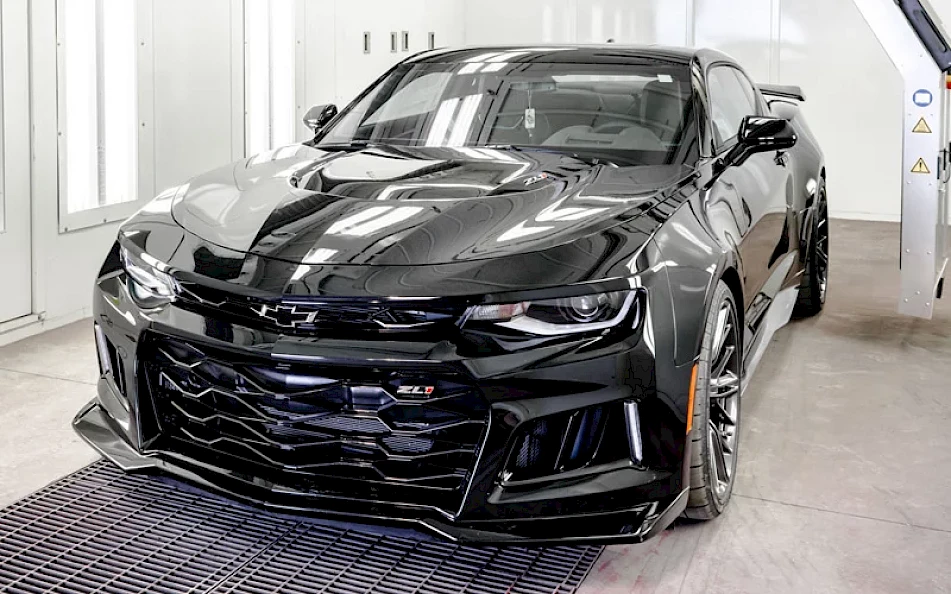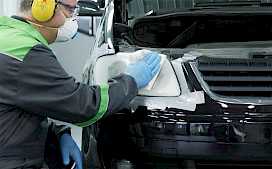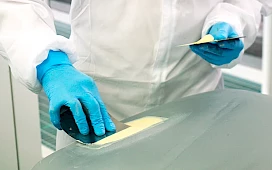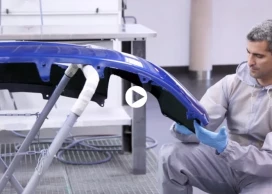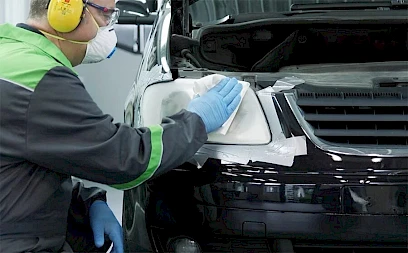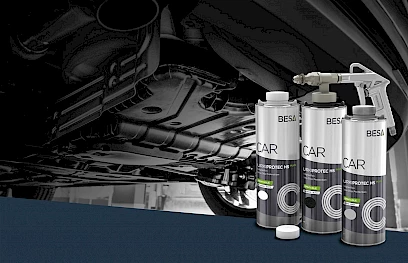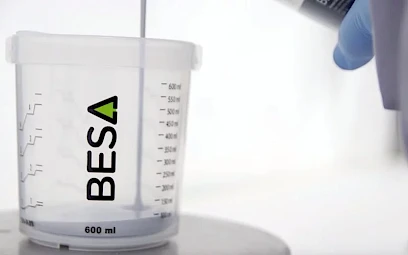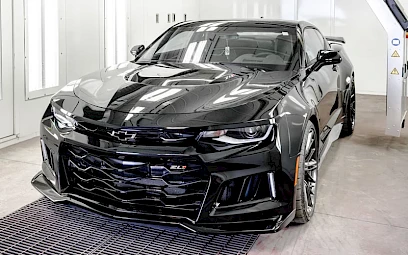What is the purpose of applying a clear coat?
Applying lacquer or clear coat on a car has two main functions:
Aesthetic function
Depending on the type of clear coat you use, you can achieve a different type of finish paint, based on the aesthetics you want to give the surface: from a glossy finish, to a more satin or even matte finish.
In addition, because of its composition and its transparent nature, clear coats serve as a visual effect enhancer for some colours: metallic colours, pearl colours, three-coated colours, etc.
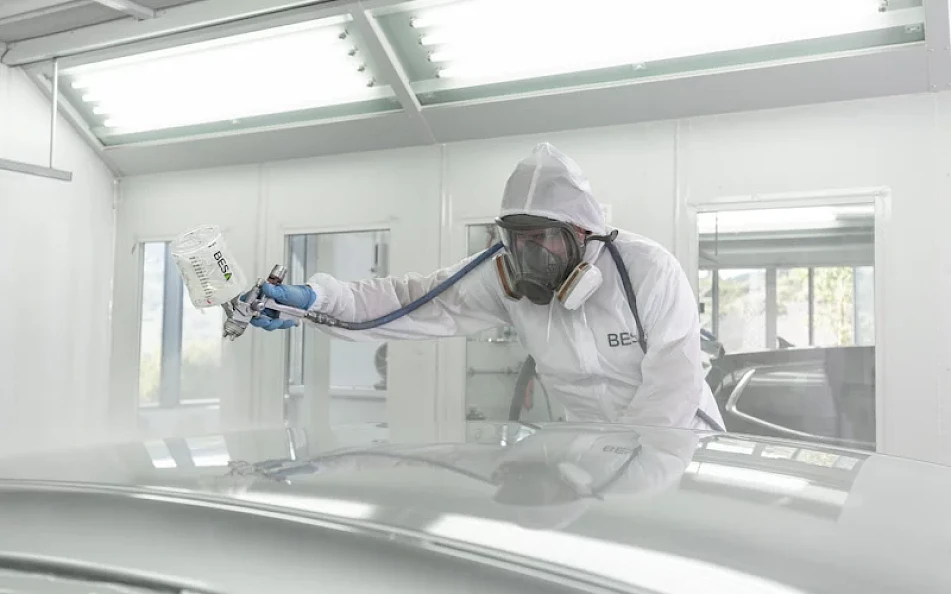
Protective function
A clear coat, as the topcoat to be applied, must provide hardness and resistance to the outside. It must also be insulating and protective of the coloured coat, sealing the surface correctly against external aggression.
Protection against mechanical agents such as automatic car wash machines, chemical products such as fuels, oils or detergents, or atmospheric agents such as UV radiation, are essential factors in extending the durability of the paint coat over time.
Types of car clear coats
The different types of automotive clear coats can be classified based on their solids content and according to the type of repair to be carried out.
Clear coats according to their solids content
The evolution of clear coats has also been accompanied by technological progress. The solids content determines the thickness of the topcoat that will remain after drying. The higher the solids content of a clear coat, the fewer layers of product you will have to apply to achieve the desired dry thickness.
It should be noted that we differentiate between car paints according to their solids content following the usual European market criteria, which may differ from those used in other markets.
There are different types of clear coats depending on their solids content and technological progress:
UHS clear coat
UHS clear coats have a high solids content, so fewer layers will be required to achieve the desired dry thickness. This is a type of clear coat that offers an excellent finish paint and a considerable drying time reduction. In addition, UHS clear coats comply with European environmental legislation on air emissions (VOC). Products classified in this category: BESA-GLASS UHS or URKI-FLY.
HS clear coat
It is a type of clear coat that contains less solids than UHS clear coat, and therefore requires more layers to obtain the same dry thickness. HS clear coats also comply in a category of their own with the environmental regulations on emissions of volatile organic compounds. An example of this type of clear coat would be: BESA-GLASS HS.
MS clear coat
MS clear coats, given their lower solids content, require several layers to provide sufficient coat thickness for protecting the finish.
Car clear coats according to the type of work
Over time, the different types of clear coats have also evolved according to their specific purpose within the repair process and the type of finish to be carried out.
Note that there are several factors that affect the application of clear coat during the repair process, such as room temperature and humidity levels, or the product’s temperature or the part it is to be applied on.
In this regard, some clear coats can be combined with different hardeners and solvents, allowing to adapt the type of repair and the drying time according to your needs.
High performance clear coats
These clear coats are composed of a higher solids content, which enables obtaining a better performance in the repainting process, allowing a lower number of layers to be applied to achieve the desired coat thickness.
They can provide extra sharpness, gloss and hardness to the finish paint, while offering good performance during their application and drying speed. An example of this type of clear coat is BESA-GLASS UHS.
Clear coats for fast or ultra-fast drying jobs
These types of clear coats are designed to optimise the drying time of the clear coat layer. An example of this type of clear coat is URKI-FLY.
These are clear coats that, due to their fast-drying time, are generally used for partial repairs or Spot Repairs. Fast-drying clear coats allow reducing the drying time without the need for cabin heat energy consumption, which can lead to very significant savings in the painting cycle, and a remarkable increase of productivity and profitability in the painting process.
Anti-scratch clear coats
Anti-scratch clear coats have greater hardness and mechanical resistance to dints and scratches. They also behave well outdoors and are easy to apply. Example of scratch-resistant clear coat: BESA-GLASS HS “ANTI-SCRATCH”.
Matte or satin finish clear coat
These have traditionally been used for repainting plastic parts such as bumpers or mouldings. However, nowadays increasingly more vehicles are being completely painted in matte finish especially high-end vehicles. These clear coats allow to obtain completely matte finishes or with different gloss levels when mixed in specific proportions with gloss clear coats. An example of this clear coat is BESA-GLASS HS MATTE.
Spray clear coats for partial repairs
Some clear coats are available in 1-component spray (1K), which dry by evaporation of the solvent on contact with the air in the atmosphere. They are easy to apply, and although they do not have the features of 2-component clear coats, they can provide a correct resistance and gloss according to the type of repair.
In contrast, lacquers in 2-component spray (2K) have product A, the clear coat, and product B, the hardener, separated into two chambers. They dry by chemical reaction. These are clear coats that despite being intended for small repairs, can provide the same characteristics in terms of gloss, resistance and finish as bodywork clear coats.
Water-based clear coats
This type of clear coat contains a lower VOC than solvent-based clear coats.







